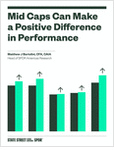Exchange-traded funds have traditionally been the domain of index-tracking strategies, but in recent years, more actively managed stock ETFs have come to market. They bring the potential for market outperformance without the higher fees that often accompany traditional open-end mutual funds, according to a new blog post from Morningstar.
And because of their structure, ETFs can also offer better after-tax returns than open-end funds.
Morningstar’s report indicates that at the end of 2018, there were just 58 actively managed diversified U.S. stock ETFs, compared with 463 passively run funds. By the end of 2021, their number had increased to 175, and today there are 320 — still behind the 609 index-tracking ETFs.
To find the top-performing active ETFs, analysts screened for the top-performing active stock ETFs, searching for funds across all nine of Morningstar’s diversified U.S. stock fund categories.
They first screened for ETFs in the top quartile of their categories using the lowest-cost share classes over one-, three- and five-year time frames. They excluded funds with less than $100 million in assets and those with no or minimal Morningstar analyst input on their Medalist Ratings.
The ETFs on their final list all had Morningstar Ratings of four or five stars.
See the accompanying gallery for the seven best-performing active stock ETFs, according to Morningstar.
Slides: Credit: Chris Nicholls/ALM






















 Copyright © 2024 ALM Global, LLC. All Rights Reserved.
Copyright © 2024 ALM Global, LLC. All Rights Reserved.